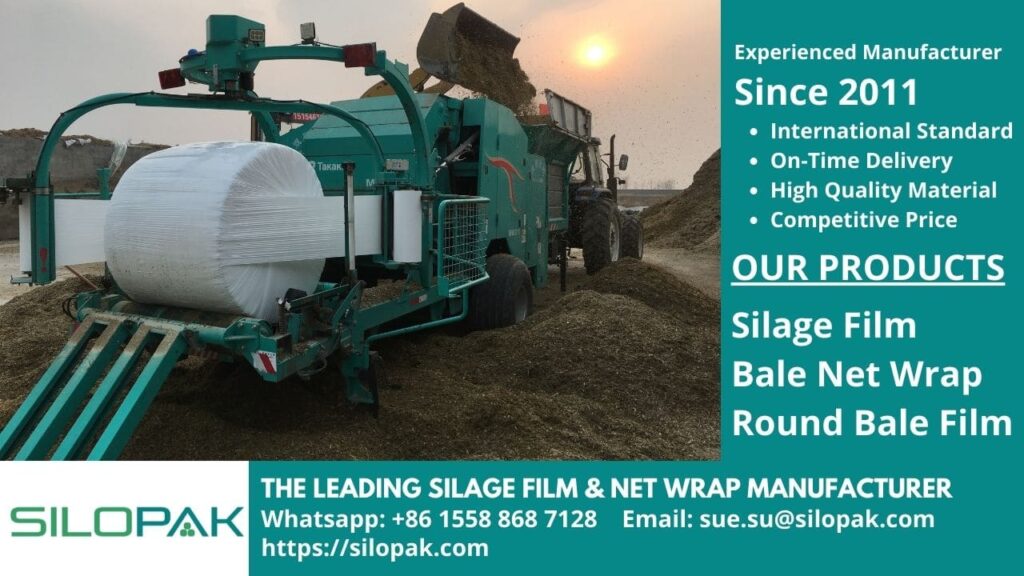
Sheep, cattle, or horse breeders must be familiar with the term haylage. It’s a fermented haystack. Straw fermentation is used for animal feed such as cattle and others. Then did you know the fermentation stages to produce good straw for your livestock? The following will explain the steps that will not be missed in the slightest.
contents
Fermentation Stages of Animal Feed Straw
Before talking about the stages of straw fermentation, it would be nice to explain in detail what haylage is. Green feed is often referred to as haylage, which includes green fodder for livestock straw. This feed must go through the fermentation stages before being given to livestock. Because by going through these stages, the animal feed contains more nutrients and nutrients that are good for growth.
Haylage is in the form of a pile wrapped in a special material. The green feed is wrapped in a wet state with approximately 50% humidity. It aims to expedite the fermentation process. Next, let’s discuss the fermentation stages for this green fodder. In general, this process consists of four stages.
The four stages are the aerobic stage, anaerobic stage or also called fermentation, stable, and feed out stage. Of the four stages, each will produce a different form of feed. Here is a more detailed explanation.
Aerobic Stage
The first stage is aerobics. In this stage, green grass or straw or also called alfalfa will be harvested, which will then be wrapped. When the grass is cut and will be wrapped, it still contains sugar levels. The presence of air will make the fermentation process run well. In contrast, if there is no air, the fermentation process will not work properly.
Microbes that are still alive will help the fermentation process. The result of this first fermentation stage is grass or also called fresh alfalfa, with less sugar content than when it was freshly harvested. The sugar content can be reduced due to the role of the yeast given at this stage. The fermentation events that occur in this process are the reduction of dissolved oxygen; decreased pH; yeast breeding; and increased CO2 levels.
Stages of Anaerobic
This is the second fermentation stage after the aerobic stage. This stage is also called the active fermentation stage after passing through the initial fermentation stage. Why is that? Oxygen is reduced a lot in the first stage, making bacteria or microbes work optimally. At this stage, anaerobic bacteria will dissolve into acids which are useful in the active fermentation stage.
The amount of acid in the green feed will make the pH decrease. Thus, this condition causes microorganisms to not grow. Also in this stage, acetic and other acids are produced, causing carbon dioxide to be lost. In addition, the carbohydrate content will also be reduced and the feed conditions will be drier than before. Despite these conditions, feed nutrition will still be maintained.
Stable Stages
It is called a stable stage because the condition of the fermented green feed will remain different from that of fresh grass. At this stage, there is a process of enzymatic entry into the forage feed. These enzymes come from bacteria and fungi, where the fermentation process takes place.
The function of the enzyme itself is to break down amino acids and proteins. The results of protein breakdown will produce ammonia and other nitrogen sources. The process of breaking down proteins and ammonia does not produce anything. The process produces highly dissolved protein. Even taller than fresh grass.
Stages of Feed Out
The feed-out stage means the feed is out. Yes, forages that have fermented at this stage may be exposed to air or removed from the package. Will it affect the nutritional content when removed from the package? It depends on the previous fermentation process. If the first, second, and third stages are carried out correctly, forage feed can maintain its nutritional content.
What you need to remember, the fungi and yeast that were not active in the previous process will become active again. Thus, the risk that could occur is the loss of nutrients in fermented feed, which can even be very significant. As a result, it can damage the digestion of livestock if the content of fungi and yeast is in the feed.
Then what’s the solution? The solution is to pay attention and carry out the fermentation stages from the first to the last stage correctly. In addition, pay attention to the process of harvesting forage feed. Harvest in an ideal and suitable humidity. Also, pay attention to the air that enters the package. Prevent air from entering the package.
That is the fermentation stage of making fermented forage or straw for livestock. The steps above must be done correctly. This affects the final yield and quality of animal feed. Because this forage feed is used in the long term, do the fermentation process properly.
If you do the fermentation stages incorrectly, it will have an impact on the digestion of livestock. Of course, it will hurt you, right? Before that happens, study the steps in fermenting forage feed seriously.
